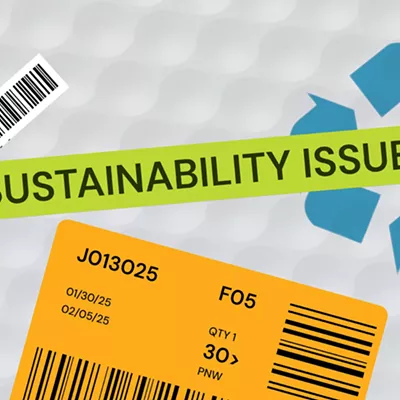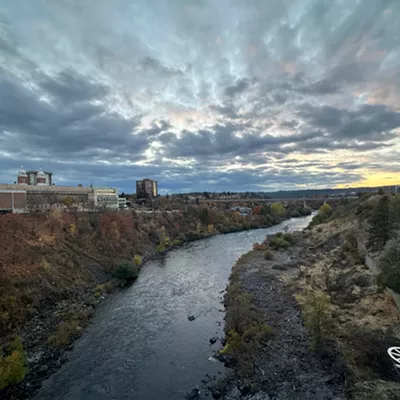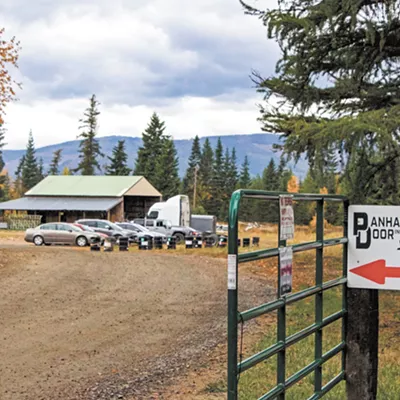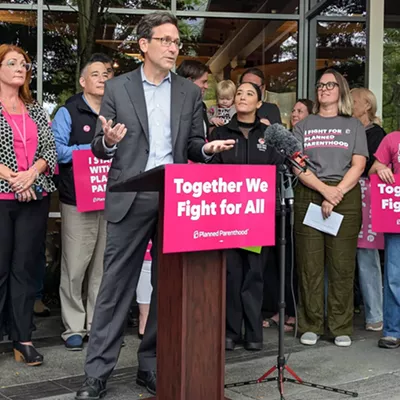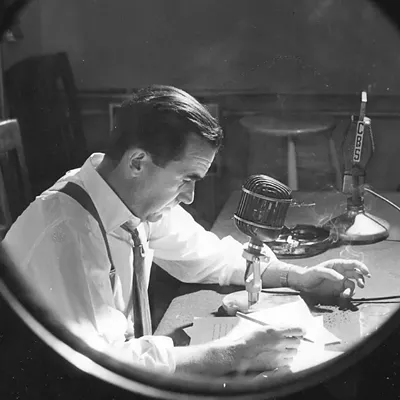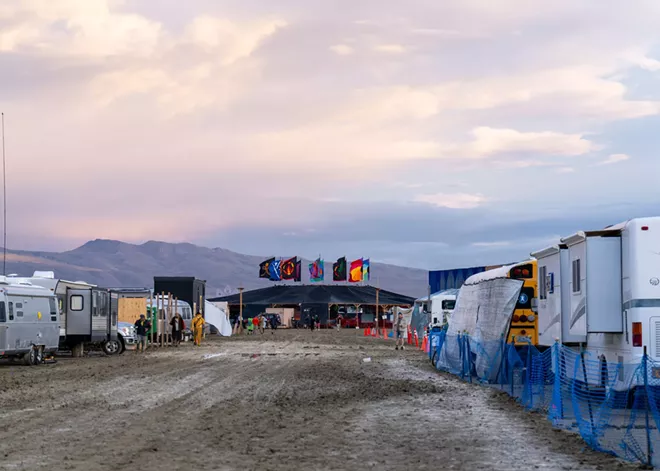
In September, about 70,000 people gathered on a dry lakebed, or playa, in northwestern Nevada's Black Rock Desert for the annual Burning Man festival. The environmental consequences of the event have long been a point of debate, and this year they were impossible to ignore.
The attendees, or "burners," who were traveling to the playa ran into a climate protest that halted traffic with a barricade. Then, during the final days of the nine-day festival, a rainstorm left attendees stranded in foot-deep mud. The combination of these events raised urgent questions about the ecological and climate implications of a festival that has projected an ethos of environmental responsibility since its creation.
In just 24 hours on Sept. 1, the Black Rock Playa was hit with 0.8 inches of rain — two to three months' worth for the usually dry lakebed. The Bureau of Land Management closed the entrance for the remainder of the event. Attendees were told to shelter in place, avoid driving in mud, and conserve food and water. Social media was quick to ridicule those trapped on the playa, which included celebrities ranging from comedian Chris Rock to right-wing political activist Grover Norquist, especially since the once-countercultural festival has earned a reputation as a refuge for the rich and elite. Although this year's event provided more drama than usual, the playa faces much greater threats than mud-caked burners itching to get home.
Still, although the rain and mud may have meant disaster for the human partygoers, it was cause for celebration for the desert's invertebrate populations, the brachiopods. If the dry lakebed floods for a long-enough period of time, invertebrates, such as fairy shrimp and triops, will hatch. This abundance of returning life should be taken as a sign that, despite the miles of muddy tire tracks, the impacts of this year's Burning Man might look worse than they are, according to Patrick Donnelly, the Nevada state director for the Center for Biological Diversity.
"Burning Man occupies something like 5% of the Black Rock. The vast majority of the playa is totally untouched by their activities," Donnelly said. "In general, they have really held true to their 'Leave No Trace.' [Last year] I went out to the sites about two weeks after the event. And I was driving around the playa, and you couldn't tell they were there — and I had GPS coordinates for the site."
It's true that the marks of this year's Burning Man will be visible for a while. Driving on the wet playa scars the ground, The Nevada Independent reported, and attempts by desperate burners to escape by vehicle, despite orders to stay in place, will create ruts. Donnelly says cleanup from this year will be a bigger challenge than in the past, but he hopes the event organizers will live up to their "leave no trace" principles.
The real threats to the playa ecosystem, according to Donnelly, are gold and lithium mining, geothermal energy development, agricultural irrigation diversions, and cattle grazing. Many of these industries threaten the rivers that feed the playa. According to Donnelly, the Hycroft gold mine, which is visible from the festival site, is permitted for the loss of 6.99 billion gallons of water from the playa every year. Donnelly wishes that efforts to protect the playa ecosystem received the same attention as Burning Man's muddy viral moment.
"It's wonderful that people seem to suddenly care so much about the Black Rock playa ecosystem," he said. "You know, it would be great if when we put out an action alert to get comments on some projects that might destroy rural Nevada, we had all this viral engagement that people give to this kind of spectacle."
Before the rainstorm transformed Burning Man 2023 into a media laughingstock, a group of protesters tried to draw attention to the event's carbon emissions. The process of moving tens of thousands of people across the world to a national conservation area, one that lacks permanent infrastructure, creates considerable carbon emissions. Burning Man even has its own airline that allows burners to charter private planes to Black Rock City. Event organizers estimate that it emits nearly 100,000 tons of carbon annually, according to a 2020 environmental sustainability report.
Some protesters with the climate group Seven Circles traveled from Europe to barricade the road out to the Black Rock Playa, backing up traffic for miles. Video of the protest went viral after a Paiute tribal ranger drove his patrol vehicle through the barricade, drew his weapon and arrested several of the protesters.
"It's wonderful that people seem to suddenly care so much about the Black Rock playa ecosystem."
Seven Circles members said they were protesting the commodification of the event, adding that burners have lost sight of the festival's intended purpose. A statement from the group calls for bans on private jets, single-use plastics, unnecessary propane burning and unlimited generator use. "Ban the lowest hanging fruit immediately: private jets," Mun Chong, an organizer with Extinction Rebellion who has attended Burning Man in the past, said in a statement. "No single individual should have the luxury of emitting 10 to 20 times more carbon pollution than a commercial airline passenger."
Tribal Chairman James Phoenix spoke about the challenges Burning Man creates for the neighboring Paiute Pyramid Lake Tribe back in July, describing issues that range from traffic jams to airplane violations, as well as litter along the highways that tribal officers are left to clean up.
"One of the newer concerns is low-flying aircraft that fly over the lake, and some may even dip into the water. Really, we don't care for that at all. It's a nuisance to the community," Phoenix said in an interview published by event organizers. Phoenix said the event also offers benefits to local vendors and brings excitement for community members who attend. Phoenix asked that burners be aware of their impacts, prepare ahead of time and clean up after themselves.
"Please clean up after yourselves and respect our homeland," he said. "This is our home now and forever in the existence of our people." ♦
Ollie Hancock is an editorial intern for High Country News (hcn.org) reporting from Portland, Oregon.



